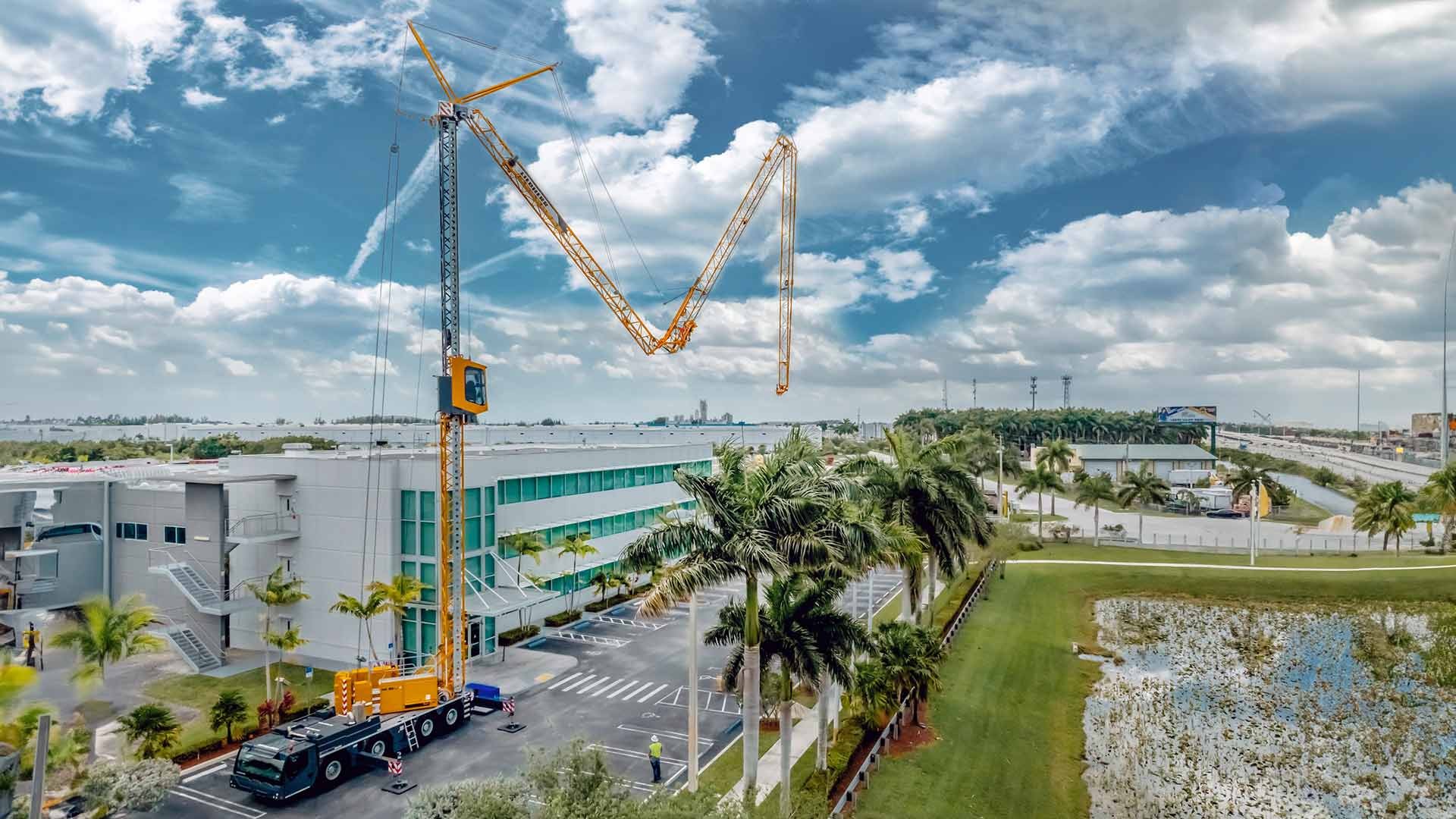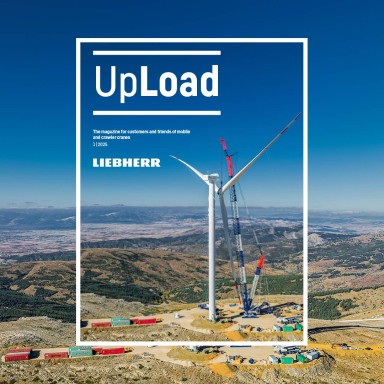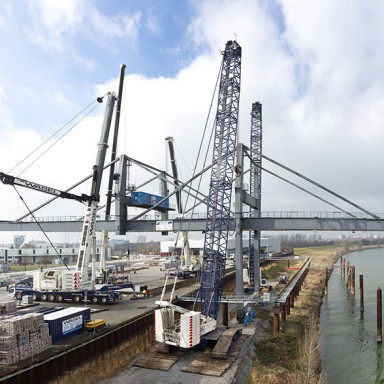
3 minutes - magazine 01 | 2025
What’s behind the type designation of Liebherr mobile construction cranes?
They combine the mobility of a classic mobile crane with the functional advantages of a tower crane: mobile construction cranes. At Liebherr, we call them MK.
The current range extends from the MK 73-3.1 to the MK 140-5.1. Jens Walter, Product Manager specialising in MK cranes, explains the meaning of the type designation.

Jens Walter, Product Manager specialised in the MK series
The secret of the first part of the type designation is easy to guess: “MK” stands for mobile construction crane. This is no surprise, at least for readers of the German edition (Mobile construction crane in German: Mobilbaukran). On Liebherr tower cranes, the letter “K” also stands for trolley jib, i.e. cranes with a trolley (German: Katzausleger).
Now to the middle part of the type name. For mobile cranes, it has been standard practice for at least half a century to state the maximum lifting capacity in the name of the crane – so the LTM 1150-5.3 is a 150-tonne crane. However, if we look at the load capacity table for the MK 73-3.1 mobile construction crane, we find a maximum load capacity of only six tonnes, not 73 tonnes! The MK 140-5.1 does not have 140 tonnes, but eight tonnes. By now at the latest, we should remember that the crane superstructure of MK cranes is a construction crane. And with this it has always been customary to state the load moment in the type name. Construction cranes are designed for performance with a large radius rather than a high maximum load capacity with a minimum radius.
Let’s go back a little in history: there were already smaller Liebherr MK cranes in the 80s and 90s. These were built on standard lorries. In 2001, we then unveiled the MK 80, which was built on a 4-axle chassis designed and manufactured by Liebherr itself. Its maximum load capacity was eight tonnes up to a radius of ten metres. The product of load and radius was therefore exactly 80 metre tonnes.
The capability of Liebherr mobile construction cranes is reflected in the type designation in the form of the load moment.
The type designation of the following MK models has usually been rounded off or adapted somewhat, as other factors also play a role in the performance of a crane, such as the hook height and the lifting capacity at maximum radius.
The last part of the type designation is quick to explain: the digit directly before the dot indicates the number of axles and the last digit the version of the crane type. For example, the MK 73-3.1 is the first version of a 3-axle MK 73. Operators of Liebherr LTM mobile cranes have been familiar with this for two decades. We added the number of axles and version to the type designation of MK cranes around five years ago.
Incidentally, we will be adding an “E” to the type designation in future, as our MK mobile construction cranes can also be operated electrically on the construction site, either with site power or a battery-based energy storage system such as the LPO Liduro Power Port from Liebherr.
This article was published in the UpLoad magazine 01 | 2025.



